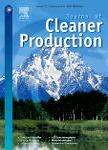版权所有:内蒙古大学图书馆 技术提供:维普资讯• 智图
内蒙古自治区呼和浩特市赛罕区大学西街235号 邮编: 010021

作者机构:Jilin Univ Sch Transportat Changchun 130022 Jilin Peoples R China Jilin Engn Res Ctr Intelligent Transportat Changchun 130022 Jilin Peoples R China Qingdao Univ Technol Sch Civil Engn Qingdao 266520 Peoples R China Jimei Univ Nav Inst Xiamen 361021 Fujian Peoples R China
出 版 物:《JOURNAL OF CLEANER PRODUCTION》 (清洁化生产杂志)
年 卷 期:2022年第371卷
核心收录:
学科分类:0830[工学-环境科学与工程(可授工学、理学、农学学位)] 08[工学]
主 题:Energy consumption reduction Traffic signal optimization Connected and automated vehicles Vehicle microscopic control
摘 要:Transportation systems face a variety of problems, especially in the aspects of traffic efficiency and energy consumption. The emerging of connected and automated vehicles (CAVs) technologies offers promising solutions to tackle these challenges. Integrating traffic signal control with vehicle trajectory optimization has significant potential to improve transportation sustainability and traffic efficiency. This paper presents an integrated traffic control framework for traffic signal optimization and vehicle microscopic control of CAVs at an isolated signalized intersection to reduce fuel consumption and improve transportation sustainability. Firstly, considering the higher controllability of CAVs, the Minimizing Overall Braking Induced by Lane Changes Model and the Intelligent Driver Model are redesigned to control the microscopic longitudinal behavior and lateral behavior of vehicles. Secondly, an optimal control model is established to optimize the trajectories of vehicles considering fuel consumption and driving comfort. The analytical, closed-form solutions are derived through Pontryagin s Maximum Principle. Thirdly, to alleviate vehicle delay, the Controlled Optimization of Phase model is applied to determine the optimal intersection signal timing plan, including signal cycle length and duration of green and red phases. Finally, a receding horizon framework is built to integrate these control strategies and conduct the optimization. Experimental results suggest that the proposed integrated traffic control framework can improve both traffic efficiency and energy efficiency. The reduced traffic delay, energy consumption, and pollutant emission can be as much as 33.51-44.25%, 18.44-22.14%, and 13.36-55.20%, respectively depending on the demand scenario.